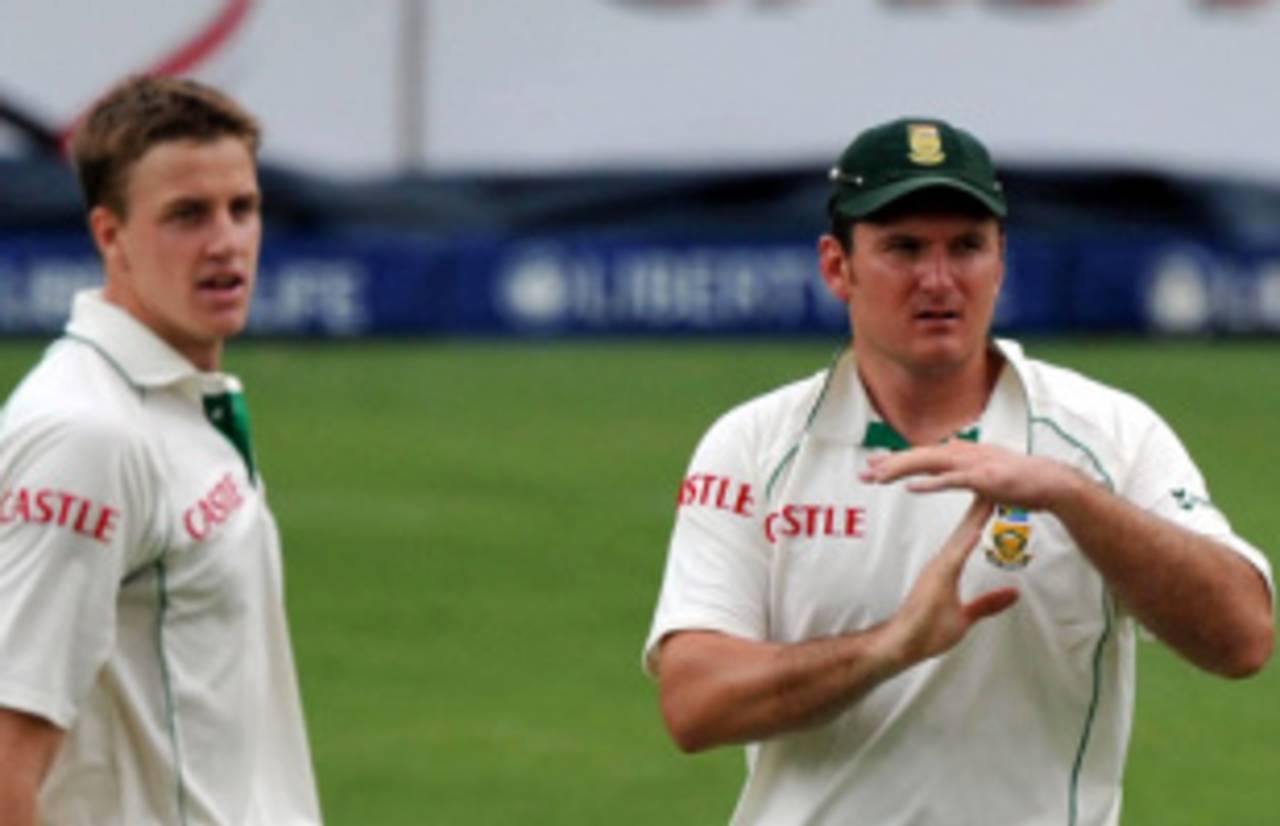As a first-class umpire, thanks to technology I do find myself thinking differently about
decisions, especially lbws. And I shouldn't think like that. I have been umpiring for 15 years, and for the last 13, certain decisions were definitely not out - now due to television I think they are close. Reassessing my decision-making means I am giving decisions based on Hawk-Eye graphics on the television. When someone gets hit on the pad, I decide based on my eye, instinct and experience. Over the last two or three years bowlers like Monty Panesar have won a lot of lbws that Hawk-Eye said would have hit but as a cricketer and umpire I wouldn't give out.
So when the technology is used fully, a lot more people are being given out. Are we going to
give it out when it just nicks the leg stump or has a certain amount of the ball got to be hitting the stumps? If this is the case, then there is a danger of the stumps effectively becoming three
inches wide. But then there is also a danger of teams being bowled out very cheaply.
Everybody wants perfection. If we are going to use technology in umpiring, use everything: Hawk-Eye's predictive elements, Hotspot - let's use the lot. And there should be no grey areas with the technology - it has to be black and white - out or not out.
Once cricketers work out the system, they'll play it; you will start with a rule-book 150 pages
long as guidance for umpire reviews. Next season you will have 200 pages. Players will find ways around everything. Hopefully the umpires involved have been fully trained. During the trial period there was a lot of confusion about what was supposed to happen.
If you do use technology, do you have neutral people working the cameras and the systems? I am not suggesting that anybody would be corrupted but if a country's top batsman has a decision pending and there is a "technical problem" ("Sorry we've lost the pictures... ") you will have to have neutral technicians. People think this is rubbish, but at one stage nobody believed in match-fixing in cricket. How far do you go?
I have been in cricket since 1966 and it is a great shame we have come down to this. I think
if an umpire makes a huge, obvious mistake - a big inside edge on an lbw for instance - the
third umpire should be able to get in touch and tell him to change the decision as the batsman is walking off.
I was brought up in the old-fashioned way. If you nicked it and didn't walk, you got off the field and got told off. You only appealed if you thought it was out. Even the bus driver appeals now. It changed because of television
But to seriously take the pressure off umpires, I would increase the amount of Test officials and
let them only stand in one Test of a series; if an umpire has a poor first Test he is under pressure in the next game. I don't care how strong you are you'll be thinking about having a bad Test. Change the umpires for every Test match so they are fresh, with no baggage from Test to Test. When I umpired in Tests, I'd do one Test abroad; might make a few bad decisions, come home and it is forgotten. You have five or six weeks off, then you go somewhere else.
There is a further problem that has arisen from the increased use of technology that international umpires have told me about. Umpires who have done Tests for five or six years have lost the art of giving out run-outs and stumpings - they just refer everything. If you have all the technology for a number of years you are going to lose the art of giving out caught-behinds, lbws and everything else because the third umpire is doing everything for you. The umpire will end up
hardly having to make a decision. Then he stops doing Tests and goes back into first-class cricket and he has to start learning again. It could be dangerous for an umpire's career.
Technology does undermine the umpire - when I did Test matches and you had the big
screen, you'd give a decision, they'd show a replay and you'd get the reaction from the crowd
and you think you've made a mistake. Then the next ball will be exactly the same and you
are under pressure and your thinking is not clear.
As a player I wouldn't have liked to have technology. I was brought up in the old-fashioned way. If you nicked it and didn't walk, you got off the field and got told off. And you only appealed if you thought it was out. Even the bus driver appeals now if you get hit on the pad. It changed because of television. It started first with the live games, then the increased technology.
Life has changed since the 1960s. They say the game is more professional now, I am not sure it is. I would like to go back to those days.
Peter Willey is a former international umpire and player. He has stood in 25 Tests and 34 ODIs. This article was first published in the October 2009 issue of the Wisden Cricketer. Subscribe here
